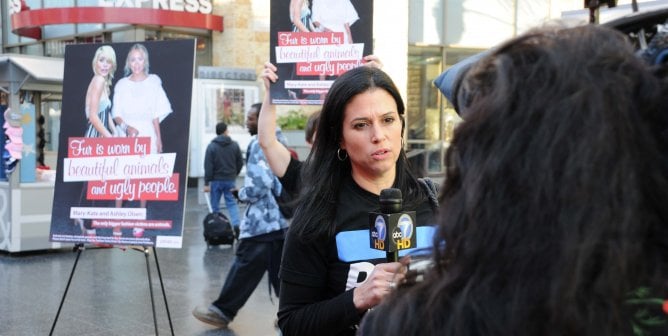PETA Launches Campaign to Free Corky, Longest-Held Orca in U.S.
Video Features Orca Expert Describing the International Quest to Move Her From SeaWorld to Bay off Coast of British Columbia, Near Her Family
For Immediate Release:
September 20, 2016
Contact:
David Perle 202-483-7382
In 1969, Corky the orca was captured—rodeo-style—off the coast of British Columbia, separated from her mother and all the other orcas in her pod, and sold to the entertainment industry. Forty-seven years later, she is still being held at SeaWorld San Diego, making her the longest-held captive orca in the world—but, as a new PETA video reveals, she has a chance to return home before she dies.
In the video, Dr. Paul Spong—the OrcaLab founder and cetologist at the center of the new Free Corky campaign—describes Corky’s story and unveils plans for a potential retirement facility to be constructed in a protected bay in her home waters. There, she would have the opportunity to relearn natural types of behavior—such as diving deep, swimming fast and in a straight line, and finding her own food—and to communicate with her brother and sister, Fife and Ripple, who often visit the adjacent Blackfish Sound.
“All we need is SeaWorld’s nod, and it could happen,” says Dr. Spong. “After all these years of doing things that are actually quite bad for orcas, SeaWorld has got a real chance to do something great, wonderful, for one of them.”
“After 47 years of misery in a concrete tank, Corky finally has a chance to go home again,” says PETA Senior Vice President Lisa Lange. “PETA is calling on SeaWorld to return her to the home from which she was abducted, where she can finally meet her brother and sister.”
PETA—whose motto reads, in part, that “animals are not ours to use for entertainment”—notes that orca pods have unique dialects, and in the 1990s, Corky famously responded to a recording of her family’s calls played for her at SeaWorld during a taping of Prime Time Live. Her pod is her only family, as she has no offspring: Although she was bred seven times—six times with her own cousin—six out of her seven calves died within weeks of birth, and her seventh pregnancy miscarried. The calf was found at the bottom of the tank.
For more information, please visit SeaWorldOfHurt.com.


